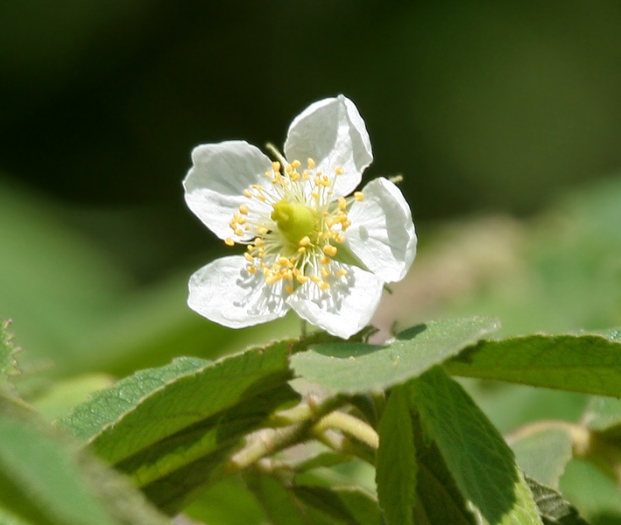Jamaica Cherry
(Muntingia calabura)
Jamaica Cherry (Muntingia calabura)
/
/

J.M.Garg
CC BY-SA 4.0
Image By:
J.M.Garg
Recorded By:
Copyright:
CC BY-SA 4.0
Copyright Notice:
Photo by: J.M.Garg | License Type: CC BY-SA 4.0 | License URL: https://creativecommons.org/licenses/by-sa/4.0 | Uploader: J.M.Garg | Publisher: Wikimedia Commons | Title: Singapur_cherry_(Muntingia_calabura)_in_Hyderabad,_AP_W_IMG_9597.jpg | Notes: {{Information |Description ={{en|1=''Muscari latifolium''}} |Source ={{own}} |Author =[[User:Meneerke bloem|Meneerke bloem]] |Date =2011-03-29 |Permission = |other_versions = }} [[Category:Muscari latifolium]] |
















































Estimated Native Range
Summary
Muntingia calabura, commonly known as Jamaica Cherry, is an evergreen tree or shrub native to tropical regions of Central and South America, including the Amazon Basin and the Andean region. It typically grows up to 12 meters tall with spreading branches and a dense, rounded canopy. The leaves are small, lanceolate, and light green. Jamaica Cherry produces numerous small, white flowers throughout the year, each up to 3 cm wide, with five lanceolate sepals, hairy on the outside, and five obovate white petals. The flowers are followed by edible red berries that are sweet and attract birds and other wildlife. The fruiting season is long, providing a continuous food source.
Jamaica Cherry is valued for its fast growth and ability to thrive in poor soils, tolerating a range of pH levels and drought conditions. It is often used in tropical and subtropical regions for urban planting, as a shade tree, and for its edible fruit. The tree is also known for its medicinal uses, with various parts used in traditional medicine. In cultivation, it prefers full sun but can tolerate partial shade, and it requires medium amounts of water with well-draining soil. While it is not particular about soil type, it does not grow well in saline conditions. Propagation is straightforward from seed, seedlings, or cuttings. However, gardeners should be aware that it can become invasive outside its native range and may require management to control its spread.CC BY-SA 4.0
Jamaica Cherry is valued for its fast growth and ability to thrive in poor soils, tolerating a range of pH levels and drought conditions. It is often used in tropical and subtropical regions for urban planting, as a shade tree, and for its edible fruit. The tree is also known for its medicinal uses, with various parts used in traditional medicine. In cultivation, it prefers full sun but can tolerate partial shade, and it requires medium amounts of water with well-draining soil. While it is not particular about soil type, it does not grow well in saline conditions. Propagation is straightforward from seed, seedlings, or cuttings. However, gardeners should be aware that it can become invasive outside its native range and may require management to control its spread.CC BY-SA 4.0
Plant Description
- Plant Type: Tree, Shrub
- Height: 25-40 feet
- Width: 15-30 feet
- Growth Rate: Rapid
- Flower Color: White
- Flowering Season: Spring, Summer
- Leaf Retention: Evergreen
Growth Requirements
- Sun: Full Sun
- Water: Medium
- Drainage: Slow, Medium, Fast
Common Uses
Butterfly Garden, Drought Tolerant, Edible*Disclaimer: Easyscape's listed plant edibility is for informational use. Always verify the safety and proper identification of any plant before consumption., Low Maintenance
Natural Habitat
Native to tropical regions of Central and South America
Other Names
Common Names: Calabur-Tree, Capulin, Panama-Berry, Strawberrytree, Jamaica-Cherry, Strawberry-Tree, Buah Cheri, Malayan Cherry, Singapore Cherry, Calabura
Scientific Names: , Muntingia calabura, Muntingia rosea, Muntingia calabura var. trinitensis, Muntingia glabra,
GBIF Accepted Name: Muntingia calabura L.